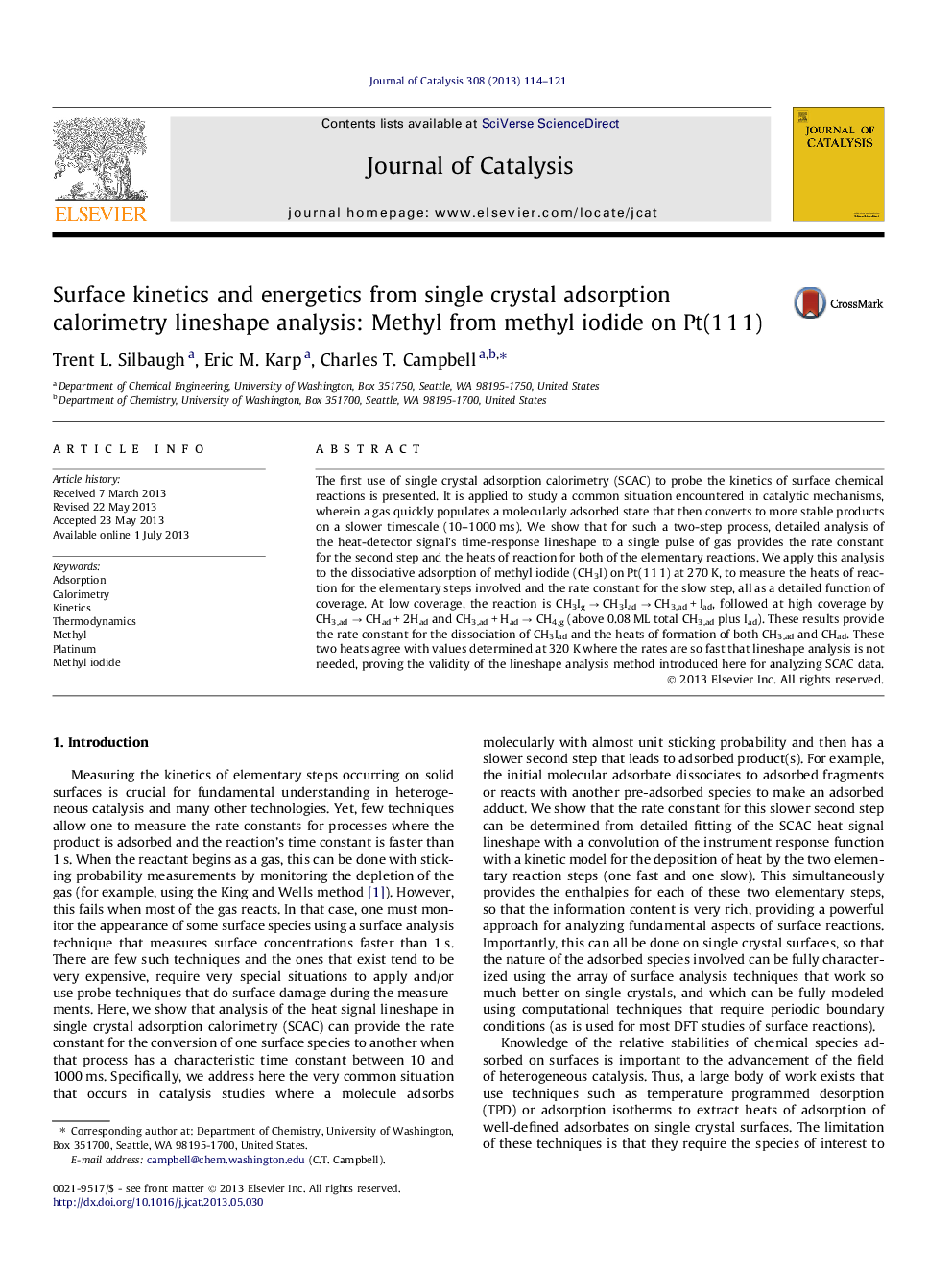| کد مقاله | کد نشریه | سال انتشار | مقاله انگلیسی | نسخه تمام متن |
|---|---|---|---|---|
| 61190 | 47569 | 2013 | 8 صفحه PDF | دانلود رایگان |

• First use of heat signal lineshape analysis in single crystal adsorption calorimetry.
• Provides kinetic information in addition to heats of reaction.
• Extends adsorption calorimetry to study slower reactions where signal lineshape is distorted.
• Applied to determine energetics and rate constants in multi-step dissociative adsorption.
• Applied to dissociative adsorption of methyl iodide to make adsorbed –CH3 and then –CH on Pt(1 1 1).
The first use of single crystal adsorption calorimetry (SCAC) to probe the kinetics of surface chemical reactions is presented. It is applied to study a common situation encountered in catalytic mechanisms, wherein a gas quickly populates a molecularly adsorbed state that then converts to more stable products on a slower timescale (10–1000 ms). We show that for such a two-step process, detailed analysis of the heat-detector signal’s time-response lineshape to a single pulse of gas provides the rate constant for the second step and the heats of reaction for both of the elementary reactions. We apply this analysis to the dissociative adsorption of methyl iodide (CH3I) on Pt(1 1 1) at 270 K, to measure the heats of reaction for the elementary steps involved and the rate constant for the slow step, all as a detailed function of coverage. At low coverage, the reaction is CH3Ig → CH3Iad → CH3,ad + Iad, followed at high coverage by CH3,ad → CHad + 2Had and CH3,ad + Had → CH4,g (above 0.08 ML total CH3,ad plus Iad). These results provide the rate constant for the dissociation of CH3Iad and the heats of formation of both CH3,ad and CHad. These two heats agree with values determined at 320 K where the rates are so fast that lineshape analysis is not needed, proving the validity of the lineshape analysis method introduced here for analyzing SCAC data.
Figure optionsDownload high-quality image (94 K)Download as PowerPoint slide
Journal: Journal of Catalysis - Volume 308, December 2013, Pages 114–121